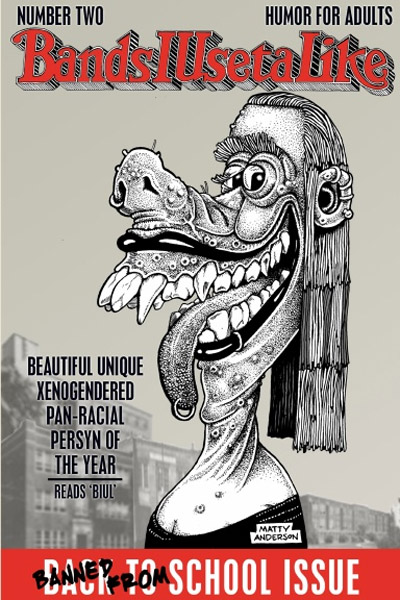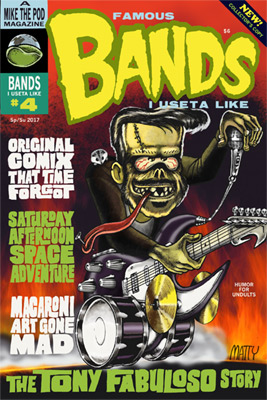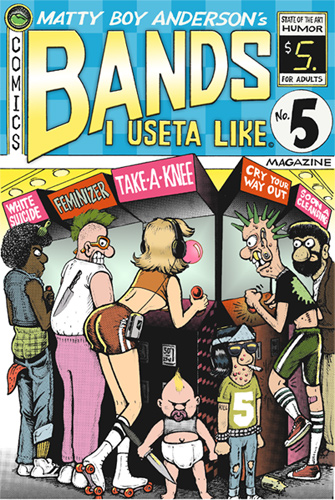From 1989 to 1992, all anyone knew of Nine Inch Nails was prettyhatemachine. Your opinion of that one album was your opinion of Nine Inch Nails.
Before Broken, NIN’s sophomore EP, you could be forgiven for thinking Trent Reznor was the heir apparent of electronic Goth, following the dark path of Joy Division and Depeche Mode. Reznor was the scion of a venerable HVAC company (founded 1888!), and probably spent much of his young life in the presence of gigantic, droning machines. “Industrial” was already wired into his veins.
I was not at all a fan of NIN at first. When “Head Like A Hole” was a hit, I learned to detest the sounds of it starting up, that goddamned “prrrrt-pp-pt prrrrrt-pp-pt RANGYEAH!!! RANGYEAH!!! hoot! hoot! hoot!” DEVO covered this single, and if you’d like an example of why great music requires the use of drugs, listen to a sober version. (While you can: it’s WMG, after all.)
Slowly, from 1990-1992, I came around on NIN. Literally every single person I knew was into them/him. All girls liked it. When I’m confronted with that level of worship, I have to know if I’m missing something. So I caved, and bought prettyhatemachine. One of the first blowjobs I ever received was from a young minx who was greatly aroused by the song “Sin”. That’s why I have the CD single, even though I think the best track on the album is “Kinda I Want To”.
It was clear from that track (and several others) that there was way, way more going on with this Trent dude than with your average alternative rocker. This would become abundantly clear over the following ten years, but in 1990 we had no idea.
(In 1994, “Something I Can Never Have” appeared on the Natural Born Killers soundtrack, which is a song I’ve always hated because girls overplayed it, and it sounds like Link’s below ground in The Legend of Zelda.)
As a college frosh, I often raged on NIN; one of the earliest instances I can recall doing so with a band. “Terrible Lie” was sheer torture if your neighbors in the dorm were blasting it, because only the title would remain audible, barked at intermittent times, rendering sleep or concentration impossible. “Down In It” was my first exposure to real bass, but I cringed at Trent’s whining nursery rhyme at the end. This would become a personal running gag: Reznor draws me in with his music, and drives me away with his voice. (And as noted, his overuse of words like “hole”.)
What none of us could have known, is that Trent Reznor was experiencing the same conflict within himself- whether to record with vocals (being what the fans want), or obey his own unique instrumental muse. Would the world accept his music without the sugar-coating of the traditional angsty frontman?
In late summer 1992, Reznor cemented his image for all time, at first on MTV’s 120 Minutes, with the debut of his music video “Pinion”.
Nobody knew what the fuck to make of that. Everyone saw it, slavering with anticipation for Reznor’s next move. God only knows how the club kids received it; they only cared about NIN because it was danceable. “Pinion”, assuredly, was not. It only seemed insubstantial when you expected more. As Broken‘s opening salvo, it was the onset of terror, with a video that presages Gaspar Noe’s Irreversible. When you look back, it’s astonishing how ahead of the curve Reznor was.
The next promotional single was, of course, “Wish”.
Look, folks, I use a lot of hyperbole on this here site. I do this to impress upon the uninformed the thunderous mojo of these bygone experiences. I try not to overdo the awe in my descriptions, but alas.
Try to imagine being 20 years old in 1992, and hearing this song for the very first time.
Once Henry Rollins hosted 120 Minutes, and before another big NIN video premiere, he said sarcastically “how can you get more INTENSE! Than TRENT!!!” I mean, seriously, you could hear “Gave Up” followed by Julianna Hatfield, or They Might Be Giants singing “Don’t Let’s Start”. It was kind of a schizoid show.
“Last”, the next track on Broken, is the next evolution of horny-angry Trent, who goes on to “fuck you like an animal” and all that. Truthfully, I find this style of Reznor’s to be the weakest, but chicks dig him when he sings about wombs dripping honey and hatefucking. What can you say. The man nailed his corner down tight.
“Help Me I Am In Hell” follows, completing a two-part respite from the headbanging. I think the title is a Hellraiser reference; it’s a nice creepy piece with a lot of menace. Nine Inch Nails instrumentals often do double-duty as great Halloween music.
I guarantee it’s intentional that this is succeeded by the shotgun-blast scream of “Happiness In Slavery”. In an interview after 1994’s Downward Spiral, Reznor remarked that if you hit someone in the head with a hammer a thousand times, they’ll get used to it. If you stop doing it, and then go back to it after a period of silence, it’ll have more impact. This philosophy informs most of Downward Spiral‘s structure, in particular “March of the Pigs”. At the same time groups like Nirvana and Hole were pounding the same formula into the earth’s crust.
(An aside on Downward Spiral: I found out years later that “Le Pig”, the “studio” where that album was recorded, was so named because it was actually the house where Sharon Tate was brutally murdered by the Manson Family, who wrote those words on a door in her blood. Reznor later sloppily retracted any inspiration from the incident, which is good, because “bad karma” doesn’t even begin to cover it.)
“Happiness In Slavery” is not a NIN song I dig, but without it, we’d never have Fixed, the remixed companion to Broken. Truthfully I prefer the versions of “Gave Up” and “Wish” on Fixed. The former was rebuilt by John Balance of the legendary Coil, and unless I’m mistaken, he sampled “it took you to make me realize” into a keyboard. Each syllable became a key, and then Balance played them percussively. I could be wrong. Balance won’t say.
After “Gave Up” (on Broken), there was silence, because your CD player was now counting up to 98. Again, I know I’m repeating myself, and it’s hard to believe, but:
WE WEREN’T SICK OF HIDDEN TRACKS YET.
It was just beginning to happen. It was still cool. It wasn’t a nuisance in the car yet. There was even a brief period where if a CD didn’t have a hidden track, you were actually kind of disappointed.
I know, right? Pre-9/11 was like Oz. Oz was only a TV show. TV was pretty good. People still watch Seinfeld; ever notice that?
Anyway, Broken had two hidden tracks. The first was “Physical”, an Adam Ant cover which features Reznor going “too fuh-king physical”. I don’t know the original, but the cover is decent. The second hidden track was “Suck”, a contested piece that appeared in an earlier form on a Pigface album. This version is ten times superior.
Without exaggeration, that’s one of the greatest NIN songs ever, and Reznor stuck it where you have to work to get it. He experienced legal brutalities from TVT, prettyhatemachine‘s label, and as a result formed his own label (Nothing) for Broken. Whether you knew it or not, you bought original American material when you bought Broken. Even the unfolding cardboard case felt homemade and dangerous when first opened, like an angry letter concealing a bomb.
The shockwaves are still resonating just shy of 25 years later.












You must be logged in to post a comment.